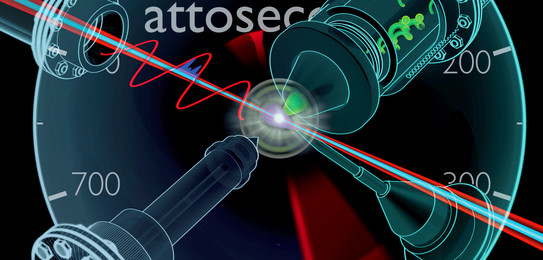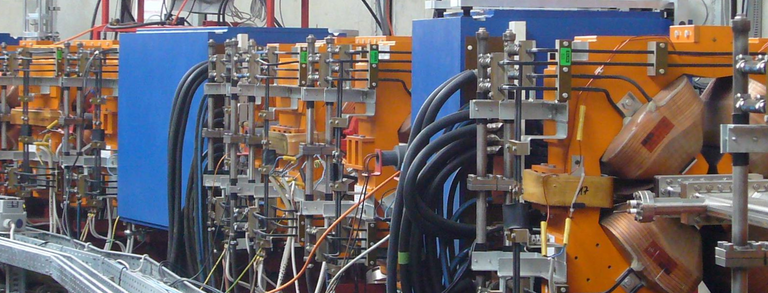Jun.-Prof. Dr. Wolfram Helml
Department of Physics
Center for Synchrotron Radiation (DELTA)
Maria-Goeppert-Mayer-Str. 2
44227 Dortmund
Room: DELTA 01
E-Mail: wolfram.helmltu-dortmundde
Tel.: +49 (0)231 755-5376

Secretariat
"In our research, we deal with ultrafast processes of electron dynamics at the fundamental level, from simple excitation processes in atoms to the complex biological processes in human cells. The relevant time scales are in the range of attoseconds, i.e. 10-18 seconds-illustratively, an attosecond is to a second what a second is to the entire age of the universe!
To measure these electron dynamics, an ultrafast stopwatch is needed: In our experiments, we use X-ray pulses superimposed with the oscillations of a circularly polarized laser field and an angle-resolved electron spectrometer. This allows us to build a so-called "streaking camera" with an extremely short exposure time. We first demonstrated this principle at the LCLS free-electron laser in Stanford, USA, in 20181. We are currently working with a "machine intelligence" group at the University of Kassel to develop a new experimental setup that will be tested at DELTA in Dortmund, Germany, and should allow time- and angle-resolved X-ray spectroscopy at the European XFEL in Hamburg with online analysis in the near future.2"
1 Hartmann, N. et al. Attosecond time-energy structure of X-ray free-electron laser pulses. Nat. Photonics 12, 215-220 (2018).
2 Dingel, K. et al. Artificial intelligence for online characterization of ultrashort X-ray free-electron laser pulses. Sci. Rep. 12, 17809 (2022)
"The image shows a typical streaking camera: An ultrashort X-ray flash (shown in blue, coming into the image from the left) is superimposed with a laser pulse (red wave train) in the center of the measurement setup. There, the X-ray flash knocks electrons out of gas atoms, which are accelerated or decelerated by the electric field of the laser pulse depending on the time of their emission. The energies of these electrons (shown in green) are measured by a detector (top right), and conclusions are drawn about the duration of the original X-ray flash and the sequence of fundamental excitation processes in the gas atoms."









